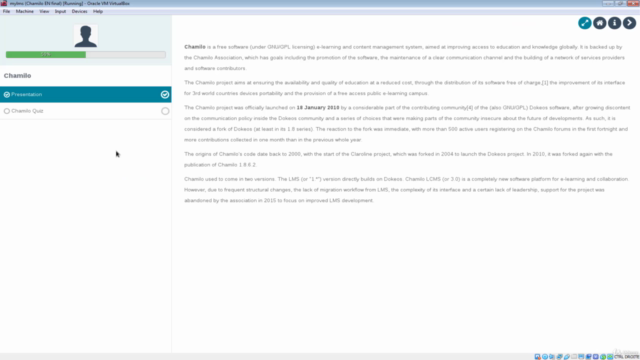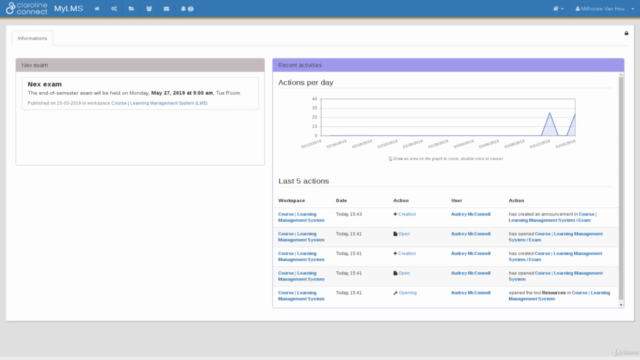How to install an Open Source LMS - Part 2

Why take this course?
🌟 Master the Art of Automated LMS Installation with Vagrant, Docker & Ansible 🌟
Overview: Streamline Your Setup Process
E-learning for everyone! Installing an LMS on a LAMP stack can be a time-consuming task when handled manually. But what if you could set up your test or development environment in just a few minutes? With the right tools, you can! 🛠️
Why Automate?
Leverage the power of DevOps tools such as Vagrant, Docker, and Ansible to save time and resources. These technologies are your key to an efficient, scalable, and manageable environment for open-source learning management systems (LMS) like:
- 🌟 Moodle: A versatile LMS that supports all types of learning across the globe.
- 🚀 Claroline: A robust platform for eLearning and eWorking, fostering collaboration and course management.
- 🌍 Chamilo: A free software aimed at improving access to education worldwide.
- 🍏 Opigno: A LMS on Drupal that offers seamless integration with your existing platforms.
Course Content Breakdown:
1. Introduction to DevOps Tools
- Vagrant: Simplifies the creation and management of virtual environments.
- Docker: Containers that encapsulate applications in a complete, consistent, isolated environment.
- Ansible: An automation tool that can orchestrate your system configuration as code.
2. Installing an Open Source LMS
- Step-by-step guidance on using the above tools to install Moodle, Claroline, Chamilo, or Opigno.
- Real-world examples and scenarios demonstrating best practices in automation.
3. Practical Exercises
- Hands-on activities to reinforce your understanding of the DevOps stack and LMS installation process.
What You'll Learn:
- How to set up a virtual environment for LMS testing and development.
- Techniques to containerize your applications using Docker, ensuring consistent performance across different environments.
- Methods to automate the provisioning, deployment, and configuration of your LMS with Ansible.
Who Should Take This Course?
This course is perfect for:
- IT professionals looking to streamline their LMS installation process.
- E-learning enthusiasts who want to contribute to open-source projects or deploy their own instances.
- Developers and system administrators aiming to master DevOps practices with a focus on e-learning platforms.
Course Highlights:
- No Prior Experience Required: You don't need to be an expert in Vagrant, Docker, or Ansible to take this course.
- Real-World Applications: Learn by working with actual scenarios that mirror real-life deployments.
- Flexible Learning: Access the course material anytime, anywhere, and learn at your own pace.
Course Details:
This training is specifically designed to help you automate the installation and setup of Open Source LMS, not to teach you how to use these LMS platforms or the DevOps tools themselves. By the end of this course, you'll be equipped with the knowledge to quickly and efficiently get an LMS up and running using Vagrant, Docker, and Ansible.
Enroll Today & Transform Your E-Learning Deployment Process
Don't let manual installation processes slow you down. Join us and take your LMS deployment to the next level with the power of automation! 🚀
Remember, this is the English version of the "Comment installer un LMS Open Source - Part 2" training, which has been successfully delivered in French. Elevate your skills and stay ahead in the digital learning revolution! 📚✨
Course Gallery




Loading charts...